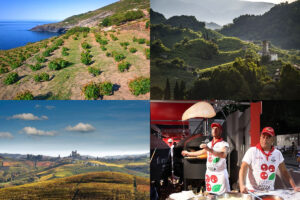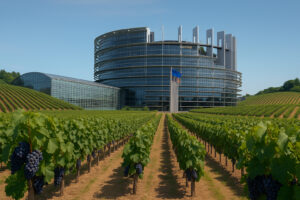Where does the wine in your glass come from? DNA analysis will tell us and there’s no need to call on “CSI” or “RIS”. Hi-tech will be able to trace the products and the consumer will be informed, says the CNR (National Research Centre), the largest Italian public research center, which focuses on technology to battle food fraud. An example? The development of wine certification systems based on chemical and genetic data, in addition to bar codes and radio frequency codes (info: www.cnr.it). The development of precision tracking tools", emphasizes the CNR, “will allow us to make better choices about products to buy and consume.
And what about wine? “So that traceability isn’t just a buzzword,” said Domenico Pignone, Manager of the CNR Agribusiness Department, “and to really reduce the risk of fraud, it’s important to implement the process through innovative technological methods, which currently are based on alphanumeric codes: bar codes and radio frequency codes (RFID). The latter,” says the researcher, “provide better results. The RFID system is fast and automated: it works using wireless chips, can be interfaced with sensors and does not require a reader. Therefore, there is less waste because of the continuous monitoring of the physic-chemical parameters of the products, allowing identification of the defective ones, which can then be eliminated. Currently, the major limitation of the RFID system,” says Pignone, “is cost, which is higher than bar code systems, and the risk is the impact especially on low-priced products and consumer goods, like fruits and vegetables, pasta or bread. But, “more wine certification systems based on genetic and chemical data are being developed, which through genetic analysis, reveal what vines and yeasts have been used in making wine and, by specific chemical analyses, indicate where the vines were cultivated. These new scenarios, thanks to ever more precise traceability, will give the consumer the possibility of knowing exactly how a product (including information on GMOs) got to his table.
However, it is also possible to track the product: “the term traceability, continues Pignone, “means the possibility of monitoring all phases of production, transformation and distribution of food and products for human consumption, from harvesting to the end product. However, the manager of CNR points out “there are two processes, incorrectly considered synonymous: traceability and trackability. Traceability follows the product from the beginning to the end, leaving “traces” that identify the various phases of the chain through the opposite process called “trackability”. There are”, he continued, “special rules for traceability of genetically modified organisms, that identify the GM of the product on the label. But the traceabilty/trackability process has also helped keep contaminated products from reaching the table”.
One thing is certain, however, traceability is also synonymous with health because “improving traceability/trackability systems is beneficial to various sectors: from food biodiversity to the relationship between food and wellness to protecting specific sectors” says Gian Luigi Russo of ISA, the Institute of food science of CNR in Avellino, “by expanding the food base to introduce a larger number of nutrients that the body needs to function correctly and prevent metabolic disturbances like diabetes, obesity and high blood pressure. Eating healthy is also discovering substances that could be damaging for consumers. Identifying harmful substances such as toxins or phytopharmaceutical residue, is”, continued Russo, “a key aspect of healthy eating and can in the long term reduce the need to invest in developing costly new medications. We can guarantee,” concluded Russo, “to those parts of the population that have particular needs due to particular pathologies, like celiac or because of cultural or religious beliefs like Hebrew or Islamic religions, products that respect their health or cultural needs”.
Copyright © 2000/2025
Contatti: info@winenews.it
Seguici anche su Twitter: @WineNewsIt
Seguici anche su Facebook: @winenewsit
Questo articolo è tratto dall'archivio di WineNews - Tutti i diritti riservati - Copyright © 2000/2025








































































































































































































